Why do people collect souvenirs? We’re not sure, but we’ve felt that mysterious urge. Surely the important thing is the experience and the memory, not an object? And yet…
If you buy a cheerful ashtray in Sicily to support their hand-painted pottery industry, that’s harmless. It celebrates the cool place you went. But what if you took a rock or a shell or a bit of mosaic or dug up a plant? You went to a cool place and made a bit less cool. You’re a cool-killer.
When Sumac was in first grade she was told Plymouth Rock was vanishing, because so many people chipped off pieces of it for souvenirs. She had to have “Plymouth Rock” explained. Later she learned the story of Plymouth Rock was sheer hooey, but it’s still obnoxious behavior on the part of credulous vandals.
Recently SorryWatch was tipped off to a book of letters from people returning things they’d stolen from a national park. Most apologized, some badly, some well. They didn’t have to face anyone, so there was less pressure from others. We wondered if that would make the apologies better.
The book is Bad Luck, Hot Rocks: Conscience Letters and Photographs from the Petrified Forest, by Ryan Thompson and Phil Orr.
For many years the museum at Petrified Forest National Park in Arizona had a big exhibit which promoted the legend that stealing pieces of petrified wood for souvenirs was BAD LUCK. It featured letters from people who had, over the years, stolen petrified wood and later returned it. Many of these letters stressed the terrible luck that had befallen people, and their hope that they could escape the CURSE by returning the booty.
The museum doesn’t do this now. Probably because it’s not true that stealing petrified wood causes bad luck. Possibly because it wasn’t really an “Indian legend.” But a Smithsonian article about archaeological work at Pompeii shows the “steal-and-be-cursed” meme is alive. “I told a newspaper about the curse on objects stolen from Pompei,” the site’s general director Massimo Osanna said. In response they’ve received hundreds of stolen tiles, bricks, and fresco fragments – and letters bemoaning the thieves’ misfortunes.
But the museum at the Petrified Forest kept the letters in an archive, used for the book. It’s a great book, with photos of the rocks and of the letters. The letters are diverse – hand-written, typed, or printed with vanished computer technologies.
One 1984 letter is hand-printed on a prison letter form. “…since I took these pieces of wood from the forest it seems my life has gone down hill ever since. No matter how hard I try to make things right. I’ve been in jail most of the time, since I’ve been to the forest and my poor wife, who I dearly love, is ready to give birth to our third child. I hope by returning these pieces of wood my life will straighten out and got the way my wife and I want it to. I truly belive it will. If it does my wife and three children will be back to read this letter and see these pieces of wood in your case….”
How did the wood DO THAT? Because obviously it’s not the guy’s fault.
A scrawled cursive note from 1983 reads “Please put this back so my husband can get well. I tried to keep him from taking it.” and is signed “Distrout Wife”
An undated printout, all caps, says “The final straw was when I stepped thru the ceiling of our new house. That’s when I told my wife. I’ve had enough. I am sending it back.” Signed “Sorry in Texas.”
Also undated: “found this in my room you can have it back. It’s bad luck I got busted the other night”
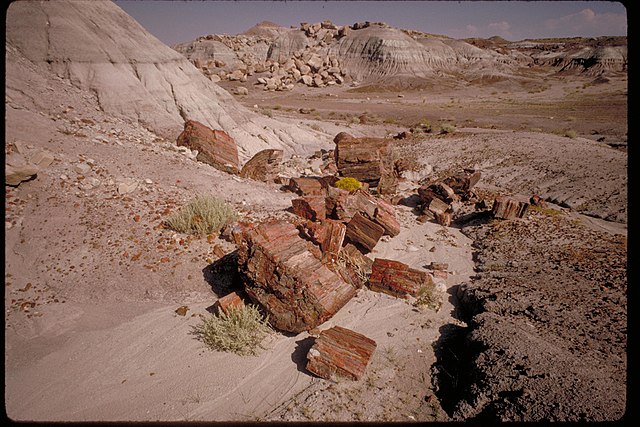
This ancient petrified wood is amazing. I will never forget it, especially if I take some home with me.
In 1988, a typed letter detailed a family’s angst. “Enclosed are the causes of very bad luck,” it begins bitterly. No sooner had the writer and her father stolen some rocks en route to her sister’s house, than the father was bitten by the sister’s cat. The bites got infected. While at the emergency room, the sister got a call saying she was laid off. The next morning the handle broke off the toaster! Then they all had a “family fight.” Then the sister pointed out that stealing petrified wood was said to bring a curse. “I feel bad for taking my findings from the Petrified Forest, and I apologize for their removal. PLEASE return them to their rightful place in the crystalized forest.” Signed “Tracie.” (“My findings.” Yeesh.)
Toaster-breaking, passive-aggressive sister-blaming Tracie isn’t the only writer issuing instructions on exactly where to replace loot. (To its “rightful spawning ground,” as one person says.)
One astonishing letter includes sketches. Captions: “Replace here…” The writer says, “Enclosed you will find a few small pieces of petrified wood that I thoughtlessly took while there in the park this past August. Call it superstition or whatever but I feel that it belongs there and nowhere else.
“I am now writing a paper on Indian rock paintings and realize that the removal of these pieces goes against the Indians’ sense of oneness and harmony with their surroundings. I would very much like to return them to the spot personally but I dont’ know when I’ll be through that way again. So I would appreciate it if you would return them to the very spot from where they came: the Puerco Indian ruins. If you were to walk up from the lowest rock paintings it would be [between] the rocks and the two pueblo ruins would be appx. one hundred yards ahead on both sides. There is one small piece of wood embedded there with loose pieces all around, these pieces enclosed were among them.
“I hope that you will return them to the same spot and not just anywhere in the park…”
Yeah, no. The rangers don’t DO that. “Because of their unknown provenance, these specimens can not be scattered back in the park; to do so would be to spoil those sites for research purposes. They are instead added to the… ‘conscience pile,’ which sits alongside a private gravel service road,” the book explains.
Some letters seem aggrieved. “My parents visited there last summer and… my mother purchased 3 petrified rocks. During that trip, my father picked one up from the grounds.
“Since that time, my father has lost his dad to cancer and my mother has had surgery for cancer. We have just found out my father has cancer of the brain and cancer of the lungs (he never smoked in his life). My mother feels the rock he took has brought bad luck on our family therefore, she has requested that I return all 4 rocks.
“Please see that they are replaced where they rightfully belong.”
A 1980 note, written in cursive with a red felt pen, says:
Here are your rock’s
nothing but trouble
Los Angeles
That’s blame-y but eloquent. A blame poem.
Other people have a firmer grip on why it’s bad to take stuff from parks, reasons other than “I can’t catch a break, why does this always happen to ME? Whoa – what if it’s a CURSE? Let’s BARGAIN!”
“A Guilty Traveler” wrote “I did not see your note on your brochure about a ‘few small pieces‘ until I returned home and now realise the effect of everyone took a ‘few small pieces.‘”
“…I stole some pieces of wood. I knew while I was doing it that I was stealing from the future & that if everyone did as I did there would be no more of those beautiful little broken pieces to shine in the sun… Sorry.”
From 1970, carefully printed on widely lined paper: “I AM SORRY I TOOK THIS. I AM ONLY 5 YEARS OLD AND MADE A BAD MISTAKE. ANDY”
One person wrote about some rocks they swiped 15 years before: “Taking it was wrong and I’m sorry I took it. This sample would make it impossible for me to honestly teach my children how wrong it is to take what isn’t yours. Hence, I must return it.”
Some explained why the thefts took place. “I rationalized that a few small pieces would not hurt.” “My youthful enthusiasm for a souvenir and my selfishness exceeded my understanding…” “[M]y boyfriend stole this… PS: I dumped my boyfriend not too long after that.” “I was so excited that I could be a part of something that took [place] millions of years ago…” “I was a grumpy teenage girl… I felt quite the rebel…”
Some argued that what they did wasn’t so bad – a rock was only removed “temporarily.”

From “Some strange corners of our country: the wonderland of the Southwest” by Charles Lummis Fletcher. 1908.
One letter, hand-printed on small binder paper, bristles with issues. “I am writing this letter in hopes of easing my conscience and saving the most important thing of my life, my marriage. Against my better judgement, I removed three rocks which my husband discovered hidden in my brassiere. Since then, being a true christian, he has constantly told me of my wrong doing. I’m afraid that our marriage is on the rocks. I want all of my eight children to see your park in the same condition that I saw it in.
“I am keeping one rock to remind me of the lesson I learned the hard way. I am enclosing twenty cents for you to buy another rock to replace the one I am keeping as a token of my guilt. I would appreciate it if you would buy one to replace the other very much. It would so ease my burdened conscience. Also enclosed are the other two rocks.
“please forgive me, and keep up the good work.”
The letter probably had no return address – most didn’t. Anyway, rangers are not marriage counselors.
Incidentally, if you have become fired up about owning petrified wood, you can buy pieces of various sizes and appearance which were collected on private land. Some have been made into bookends, paperweights, trays, pendants, statuettes of kangaroos… Probably budget more than twenty cents.
Did the fact that people didn’t have to face the rangers make the apologies any better? It’s unclear. Maybe a little. But as one person said, “This is a hard note to write. It’s not easy to admit an error even after nearly 15 years.”
And people keep writing that it was just a few small pieces. (I found them on the ground! Just lying there!)
There’s a lot of whining. It’s not completely fair to criticize the “it’s all about me and my bad luck” tone of some letters, when that’s exactly what the park once put forward. But just because they said it, doesn’t mean you had to believe it. The erstwhile grumpy teenager wrote “I can’t say I’ve had bad luck, I believe you make your own, but I do believe in Karma, and after nearly 20 years I want to return these two pieces back to you. …hindsight is a wonderful thing, and I want to right the wrong.”
So about that urge to get souvenirs. Recently Sumac had the great good luck to visit the Galápagos Islands. Souvenirs were available, and not ALL of them were Tshirts making lewd puns about boobies. The Galápagos are one of Ecuador’s amazing national parks, and they are carefully protected. Visitors were repeatedly warned that it’s illegal to take anything at all. No leaf, no lava chunk, no tortoise bone. This was explained, rightly, as a matter of conservation, not as some nonsensical “curse”.

Mockingbird wondering where its next drink is come from. Photograph courtesy of the quick-thinking and talented Nancy Arehart.
Sumac’s fellow-voyagers were mostly photographers (very very good photographers), so it was obvious what they’d be bringing back. But not everyone is a photographer.
On the astonishing island of Española, where waved albatrosses breed, Sumac saw a rare piece of trash on the beach. A cap from a Coke bottle had washed up. She picked it up to dispose of properly. Instantly a fearless Española mockingbird hurtled onto her hand and tried to drink from the bottle cap. Alas, there was neither cola nor fresh water in it, so the thirsty bird was disappointed. (They know very well that humans carry water, and regularly investigate water bottles in case they’ve been left open.)
That’s a great souvenir. It’s a memento to the tameness and boldness of animals who expect no harm from human beings. And the islands are better off without it.


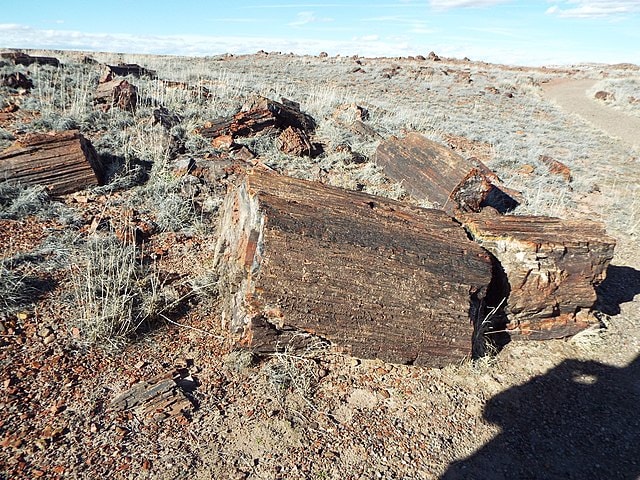
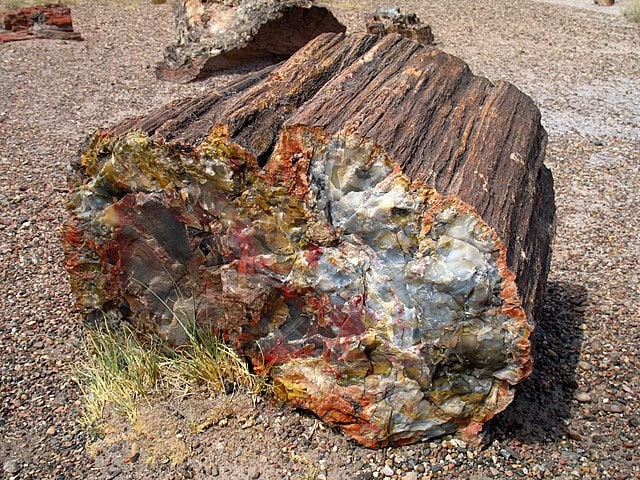
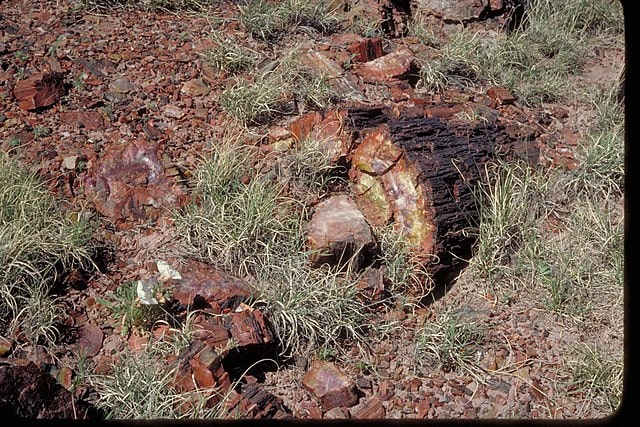
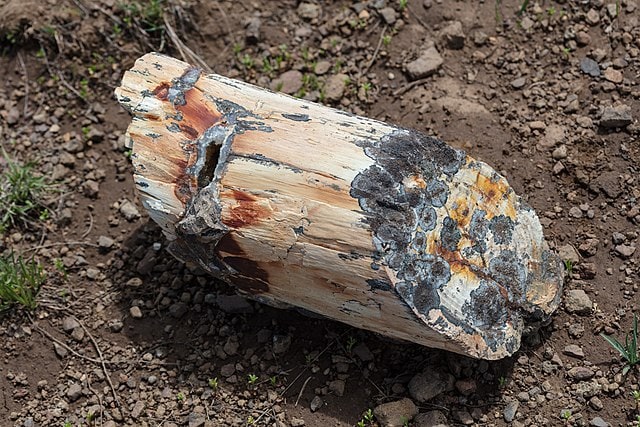

A few years ago, there were rumors that, every day, Greek workers would scatter stones around the Acropolis to replace ones that tourists were pocketing. I couldn’t find evidence to support this (and in fact someone was jailed for a few days for scooping up Acropolis) rocks, but here’s a story much like one for the petrified wood.
https://usa.greekreporter.com/2018/02/05/us-tourist-says-sorry-returns-acropolis-stones/
Picturing mail carriers staggering under their loads….
This is both pathetic and humorous. People are kind of ridiculous. Belief… frees us, or holds us hostage, depending on the day.
That mockingbird is adorable, though.
When I went to Antarctica, I was ALLOWED to take home distinctive rocks from the continent, because I could use them when I gave guided tours in my role as Public Affairs Office for the US Antarctic Program in Christchurch, New Zealand. I would give a tour of our facilities, which included displaying a complete winter flight outfit, and finished up with the rocks. Adult groups and children were amazed.
After I left the Navy, I was able to take them home, as there was nobody to pass the rocks down to — the Navy was pulling out of Antarctica, and I was not being replaced. So that accounts for my Antarctic rocks.
I haven’t been to the Petrified Forest, but when I go with my family, we’ll get our fossils in the gift shop.
There’s a big issue with people stealing Native American pots from National Parks, and the FBI brings in forensic experts to determine the soil they came from, so they can prosecute the thieves.
Now here’s the big one: divers found the wreck of the heavy cruiser HMS Exeter, sent to the bottom in the second Battle of the Java Sea, fleeing more powerful Japanese forces from Java. After taking photographs and leaving a memorial plaque on the war grave, the investigators sailed off.
Sometime later, Indonesian authorities saw lights over the Java Sea by night. They investigated with deep-sea sonar and found a long gash in the sea bottom where Exeter had been found — but no Exeter. Scrap dealers had illegally shredded the ship for profit. Nobody accounted for the remains of 54 Royal Navy Sailors that went to the bottom with her.
The story of the hulk of the HMS Exeter is appalling.
It’s for profit, exactly as you say. Not for mementos.
I used to have a little piece of pumice from Hawaii, where they promoted the same bad luck legend. It may still be around somewhere. I was oh, so tempted to write them:
When we visited Hawaii, I took a little rock. Since them my life has been changed. I met my one true love, got promoted, and won the lottery. Please send more lucky rocks!